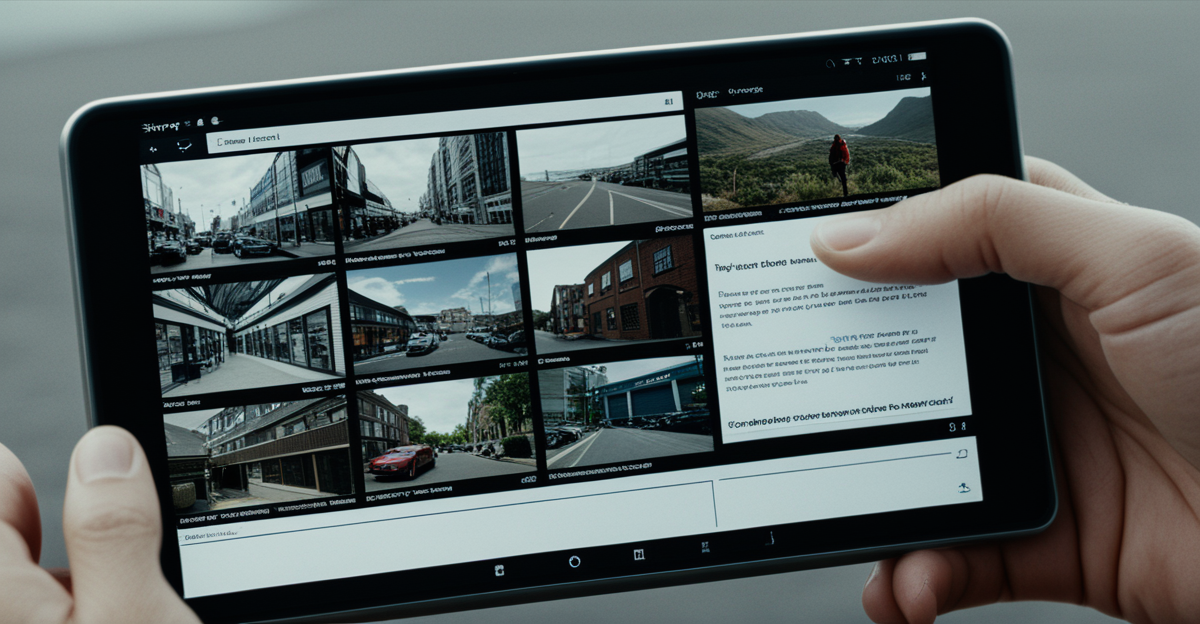Creating a clear video storyboard transforms your ideas into a visual plan that guides every step of production. With intuitive tools and simple drag-and-drop features, you can design compelling storyboards quickly—no artistic skills needed. Mastering this process boosts creativity, saves time, and improves communication across teams, making your video projects more efficient and engaging from start to finish.
Essential Guide to Creating Effective Video Storyboards
When you design your video storyboard, you take the first impactful step toward turning an idea into a coherent, visually organized plan for your video project. A video storyboard is a sequence of illustrated panels that map out scene progression, key actions, dialogue, and transitions—helping everyone involved see how the narrative unfolds before production begins. This practice answers a crucial need: visualizing content, which reduces misunderstandings, saves time, and ensures all stakeholders—from creatives to clients—remain aligned throughout the video creation process.
In parallel : How Can UK Technology Companies Enhance Their Sustainability Efforts?
Crafting a storyboard follows a logical sequence:
- Start by outlining the core message or goal of your video.
- Break your script into scenes, assigning panels for significant moments, actions, or shots.
- Add rough sketches or reference images to each panel, ensuring they communicate the intended mood, framing, and pacing.
- Annotate every frame with notes on dialogue, motion, audio, or camera movement—these details bridge the gap between your vision and the actual shoot.
Modern storyboarding makes the process accessible, even without drawing skills. Platforms and storyboard templates for videos allow you to drag and drop elements, incorporate stock images, and collaborate in real-time with your team. This enables seamless integration of video scripts with storyboard panels, offering clear visual cues and cohesive video production planning. Expect features such as online storyboard tools, custom templates, and AI-enhanced resources to accelerate and inspire creative planning for personal, educational, or professional projects.
Also read : How is UK technology driving advancements in healthcare?
The Fundamentals of Video Storyboarding
Video storyboards transform abstract ideas into structured, visual storytelling for videos. Using storyboarding techniques—from sketching frames to arranging shot sequences—creators map out the narrative scene by scene. This step-by-step storyboard creation is the backbone of video production planning, allowing for clear communication among all collaborators.
A well-structured storyboard template for videos acts as a guide. These templates are crucial tools for anyone aiming to synchronize visual storytelling for videos with production objectives. They not only define key frames and camera angles but also highlight timing and pacing, especially when planning shot transitions or annotating dialogue. Marketing, explainer, or product videos all benefit when pre-production workflow starts with this visual map.
Types of storyboards range from traditional hand-drawn panels—ideal for those who prefer physical sketching—to digital storyboard templates designed for efficiency. Storyboarding software introduces collaborative storyboard platforms, permitting multiple team members to contribute or review remotely, making storyboarding for animation or corporate projects more approachable.
The importance of storyboarding in video production can’t be overstated: it reduces errors, saves time, and allows for easier storyboard revision when feedback is incorporated. This preparation helps teams stay aligned and ensures that the visual flow of the final product matches the original vision.
Step-by-Step Process for Creating a Video Storyboard
Planning and structuring your video concept and script
Begin by deciding the purpose and style with a clear step-by-step storyboard creation approach. Visual storytelling for videos works best when you anchor each scene to your intended message. Organize your video shoot planning by outlining a basic script and narrative structure in a dedicated storyboard for product videos or commercials. Use established storyboarding techniques to set the tone of each scene, considering essential visual cues and dialogue.
Breaking down scenes and identifying key frames
Scene breakdown and planning demand selecting pivotal moments and marking them as key frames. Enumerate every story beat and transition, so video production planning aligns closely with your intended flow. For a storyboard for commercials, list the sequence of visuals to maintain coherence and highlight the message. Mapping out frame-by-frame details ensures visual storytelling for videos is both efficient and impactful.
Designing panels and composing visuals, dialogue, and actions
Construct each storyboard panel design by sketching shot composition, annotating dialogue, and inserting stage directions. Leverage storyboard templates for videos to keep your layout clear and readable. Integrate dialogue beneath each panel when applicable, enhancing comprehension. This stage requires reviewing your storyboard for product videos and refining your step-by-step storyboard creation process, optimizing for readability and flow before the video shoot.
Tools and Software: Comparing Top Online Storyboard Solutions
Precision (tp/(tp+fp)): PlayPlay, Storyboard That, Boords, and Canva are leading online storyboard tools. They combine drag-and-drop interfaces, storyboard templates for videos, and collaborative features, making digital storyboarding software both accessible and robust. Recall (tp/(tp+fn)): Each offers a broad selection of templates, adaptability for different visual storytelling for videos, and a practical approach for pre-production workflow.
Storyboard That focuses on educational storyboarding, supporting real-time collaboration and compliance with privacy frameworks. Personal, educator, and business pricing models adapt to user needs, and business users benefit from enterprise-class security.
Boords is recognized for its professional storyboarding software comparison credentials, including AI-enhanced illustration, seamless collaborative storyboard platforms, and client-ready export options. It’s well-suited for agencies wanting faster approvals and controlled team access.
Canva emphasizes simplicity and speed, enhanced by its Magic Studio™ AI. Its storyboard templates for videos and visual asset library aid both individuals and teams. Collaboration tools and extensive design options mark its appeal for social or marketing videos.
PlayPlay’s storyboard feature prioritizes intuitive visual structure, easy customization, and efficient video production. Drag-and-drop editing, automated animations, and brand integration make it effective for marketing and corporate content, especially in collaborative environments.
Best Practices and Tips for Impactful Storyboards
Maintaining clarity and flow with frame sequencing and labeling
Clear frame sequencing ensures that a storyboard guides both creators and collaborators through a video’s narrative structure without confusion. Each storyboard frame should be labeled systematically—using identifiers like scene numbers and shot types—to improve video shoot planning and make revision easier. For beginners, consistent labeling and logical progression are among the best storyboard practices for beginners, especially when visualizing camera angles and planning shot transitions.
Incorporating dialogue, shot lists, and visual notes effectively
Integrate dialogue directly in panels beneath illustrations for clarity. A shot list supports detailed video shoot planning, listing each key shot in order. Adding brief visual notes next to storyboards frames helps clarify camera angles or transitions. These storyboarding techniques streamline communication between team members, reducing errors during step-by-step storyboard creation.
Using color, layout, and revisions to refine the storyboard
Employ color in layout to highlight essential elements, improve visual storytelling for videos, and support easy scanning during revision. Organize each storyboard frame consistently, maintaining balance between images, notes, and dialogues. Frequent storyboard revision tips include gathering feedback and adapting shot transitions or camera angles accordingly. Iterative revisions—reviewing and updating frames—are crucial in digital storyboarding software, helping optimize visual flow while keeping the production team motivated and aligned.
Inspiring Examples, Templates, and Next Steps
Start your video project right by leveraging storyboard examples and samples tailored for every genre. With access to varied storyboard templates for videos, you streamline narrative structure while maintaining visual clarity. Choose from downloadable, editable panels designed for storyboarding for explainer videos, music clips, or brand assets, ensuring your visual flow in storyboards aligns perfectly with your goals.
A practical storyboard checklist for videos ensures nothing essential is missed. Confirm you’ve:
- Outlined each shot with planning for timing and pacing in storyboards.
- Included dialogue, annotations, and visual cues for seamless video production planning.
- Collaborated with your team using online storyboard tools, so feedback can refine each shot efficiently.
For brand videos, templates cover typical visual storytelling for videos—supporting key message delivery and on-brand visuals. Team collaboration on storyboards fosters creative input from stakeholders, refining your storyboard for brand videos until it’s production-ready.
Adopt best practices from real-world use cases: rapid revision tips, integrating feedback easily, and adapting scripts into storyboards with step-by-step storyboard creation workflows. These resources empower you to visualize story flow in videos from concept to screen—boosting project success and team synergy every time.


